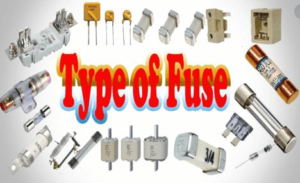Fuses are the elements that are used to protect against overloads and/or any short circuit. This when it detects a very high current above which it is calibrated as a consequence of an over-current that exceeds the value with which it works, it melts, thus interrupting the current circuit and leaving the installation out of service, that is, shutdown. This operation is due to the material with which it is built, based on metal alloy, a fuse is a device formed by a filament or support and metal sheets that fit at one point.
See also: Circuit breakers
How Does Fuse work?
A fuse performs the function of protecting an electrical device by overloading by fusion. The function of the fuse blades is to blow out in the event of an increase in electricity caused by a high voltage or current breaking.
The fuses are conducive to change from time to time since as they are protectors of electrical devices they tend to suffer damage when trying to perform their function. REBT.
The face features of the fuses include the breaking power: this is the maximum current that a fuse can interrupt. Nominal voltage: they have voltages ranging from 250 to 600 volts.
Fusing and non-fusing intensity of the fuse: the fuse has a dispersion range that ensures the fuse melts. Nominal current: the fuses can withstand a current between milliamps to 1250 A.
The melting curve: shows the connection or disconnection time of the fuse in relation to the current, depending on the needs of the installation where it is installed.
Functional principle of a fuse:
Types of Fuse
On the basis of size, shape, and application, the fuse is categorized into the following types.
-
Cylindrical fuses
These types of fuses are made with a ceramic tube that is very resistant to shocks and internal pressure. Inside this tube, which has a cylindrical shape, is the sheet, which is what fuse work does.
-
Knife fuses
Also known as MH fuses. It is the type of fuse that is usually used against short circuits and overloads in certain distribution facilities.
-
- Blade Fuse Classes
-
-
Pickup fuses
This fuse is very similar to the cylinder fuse in its operation.
-
Glass encapsulated fuses
These are fuses that are built with metallic wire or with a sheet, which are covered with a glass tube. This is installed between the power supply and the circuit. Once it detects a current higher than its admitted values, it melts, breaking the current flow.
-
Bare fuse
Type of fuse that uses metallic wire or lead, which when it detects an overheating in the circuit, melts.
-
Screw-on Fuse
It is presented as a cylindrical porcelain tube, although it is also constructed with other similar materials, which at the same time makes use of a threaded sleeve that is used to enter the circuit.
-
Cartridge fuse
Formed by a tube made of insulating material, which uses metal supports as a means of closure and which is also what makes it enter the circuit under pressure.
-
Lead fuse
They are shown as a piece of lead-based wire which is sandwiched in the circuit. This once detects the current intensity melts. It is the oldest fuse known today, they are not very safe and they rust and corrode very easily. These became disused since they also spill throughout the circuit when they melt and melt.
-
Diazed fuse
Fuse is built based on a cartridge or pellet, which is placed on the threaded crown and at the same time is screwed firmly to the fuse holder base.
-
Type S fuse
These fuses can be found in service panels and are widely used in supplying power to small appliances and lighting.
Characteristics Of Fuse
- Breaking power: this is the maximum current that a fuse can break.
- Nominal voltage: they present voltages with values ranging between 250 and 600 v.
- Fusing and non-fusing intensity of the fuse: the fuse has a dispersion band that does not ensure the fuse melts.
- Nominal current: the fuses can withstand a current between 2 to 1250 A.
- Melting curve: shows in relation to the current disconnection time of the fuse.
Related Topics
- Types of Circuit Breakers
- Difference between Fuse and circuit breaker
- Difference between series and parallel circuits
